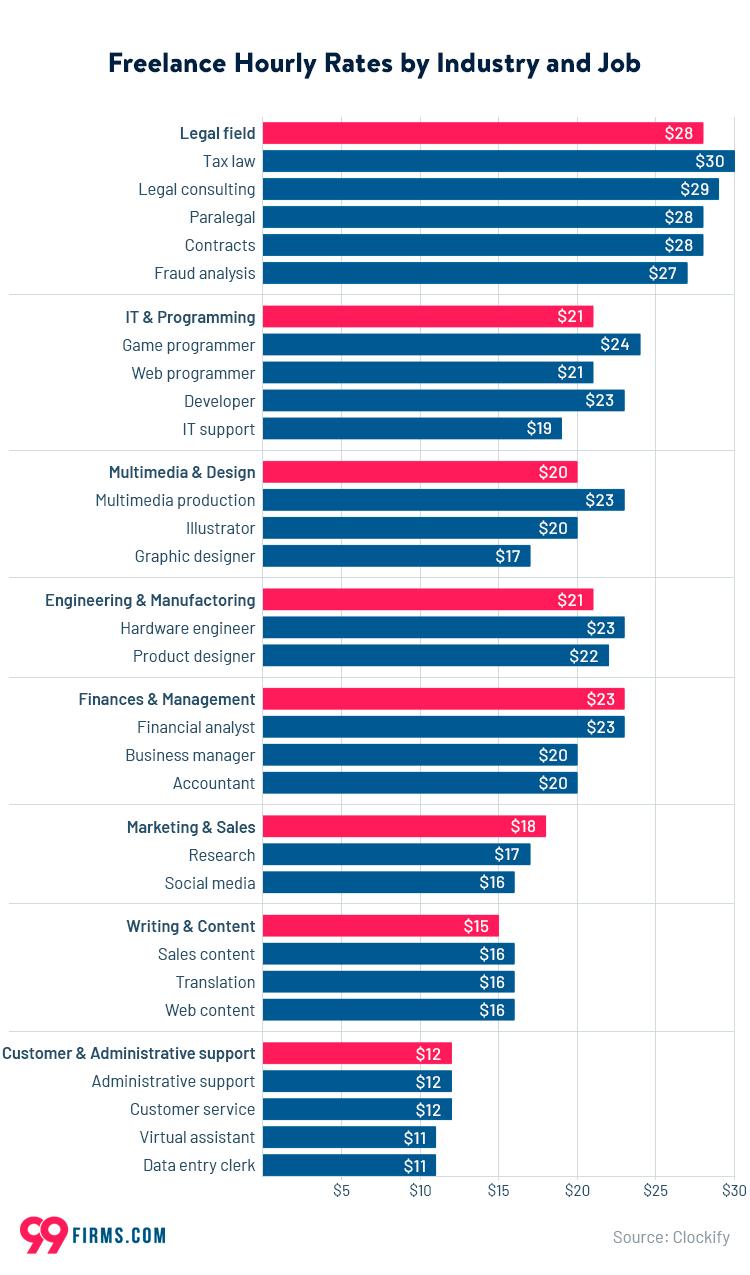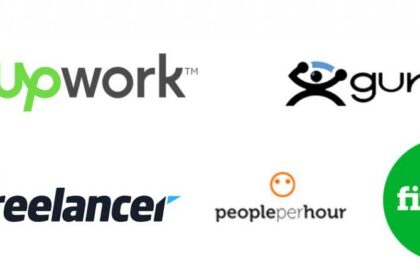In the ever-evolving landscape of the gig economy, freelance work has emerged as both a beacon of independence and a labyrinth of complexities. For many creatives, experts, and professionals venturing into the freelance realm, one of the most daunting tasks is deciphering how to price their services effectively. “Decoding Freelance Rates: A Guide to Smart Pricing Strategies” invites you to explore the intricate world of freelance pricing with clarity and confidence. This article will unravel the factors influencing rates, examine common pricing models, and provide practical strategies to help you establish competitive yet fair prices. Whether you’re a seasoned freelancer or just embarking on your freelance journey, understanding these crucial elements can empower you to make informed decisions and nurture a sustainable career in a crowded marketplace. Join us as we navigate the numbers behind your value, revealing the secrets to setting rates that resonate with both you and your clients.
Freelance Writing
Setting your rates as a freelancer can feel like navigating a labyrinth. Understanding the market, your expertise, and the value you offer are crucial elements in determining what to charge. Consider the following factors when crafting your pricing strategy:
- Experience Level: Assess how long you’ve been in the field and the depth of your expertise.
- Market Demand: Research what other writers in your niche are charging.
- Your Niche: Highly specialized fields may allow for premium pricing.
- Project Scope: Factor in the complexity and length of the project.
To provide a clearer picture of rates, here’s a simple comparison table capturing common pricing models in the space:
| Pricing Model | Typical Rate | Pros | Cons |
|---|---|---|---|
| Per Word | $0.10 – $1.00 | Aligns with effort | May limit earnings on longer projects |
| Per Hour | $20 – $150 | Easy to calculate | Clients may scrutinize time spent |
| Flat Fee | $50 – $3000+ | Clarity for clients | Risk of underestimating time required |
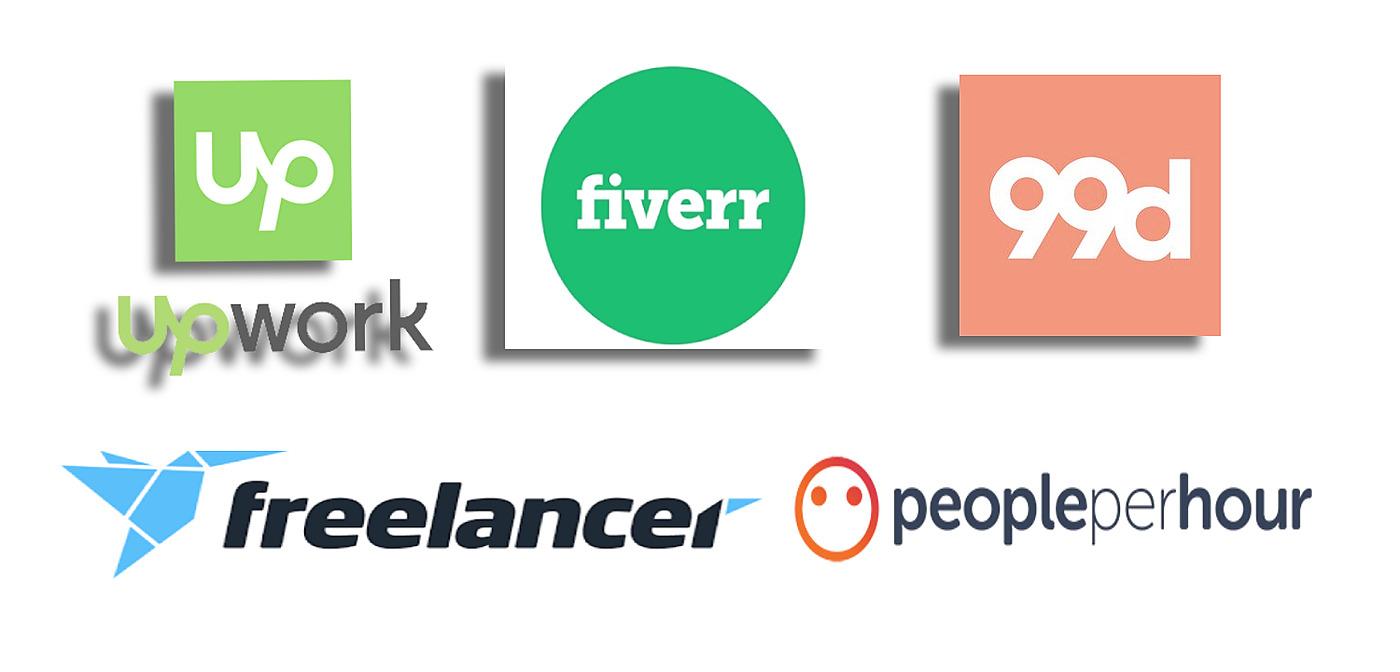
Freelancing Platforms
In the vibrant world of freelancing, choosing the right platform can significantly influence both your visibility and income potential. Each platform comes with its own set of strengths, catering to different niches and audiences. Popular options include:
- Upwork: Known for its diverse job listings, it connects freelancers with clients seeking various skills.
- Fiverr: This platform emphasizes microservices, allowing freelancers to showcase specific skills at set prices.
- Freelancer: It offers a competitive bidding environment where freelancers can pitch their rates, which can lead to better pricing strategies over time.
- PeoplePerHour: Focused on projects that can be completed within an hour, this platform appeals to quick-turnaround tasks.
Engaging with these platforms effectively requires an understanding of their fee structures and audience engagement. Pricing can often be influenced by:
- Market Demand: Stay updated on trends in your field; high-demand skills can command higher rates.
- Client Feedback: Positive reviews can boost your profile, allowing you to justify higher prices.
- Specialization: Offering niche services can set you apart from competitors and enable premium pricing.
| Platform | Fee Structure | Target Audience |
|---|---|---|
| Upwork | 20% for first $500; reduces with earnings | All freelancers |
| Fiverr | 20% on every transaction | Service consumers |
| Freelancer | 10% on fixed price projects | Bidders |
| PeoplePerHour | 20% on earnings | Time-sensitive clients |

Freelance Graphic Design
When embarking on a journey, establishing your rates can be a daunting task. It’s essential to strike a balance between competitive pricing and fair compensation for your skills, expertise, and artistic vision. Several factors should be taken into consideration when determining your rates:
- Experience Level: Your years in the industry and the depth of your portfolio significantly influence your pricing.
- Market Demand: Researching local and global trends helps you gauge what clients are willing to pay for your services.
- Project Scope: Assess the complexity and timeframe of each project. More intricate tasks should warrant higher fees.
- Client Type: Differentiate pricing based on whether you’re working with startups, small businesses, or large corporations.
Additionally, understanding the common pricing structures within the graphic design industry will help you present your services clearly. You may choose to adopt any of the following models:
| Pricing Model | Description |
|---|---|
| Hourly Rate | Charge clients based on the time spent on projects. |
| Flat Fee | A predetermined price for specific services or projects. |
| Retainer | A regular fee for ongoing work or prioritized availability. |
| Value-Based Pricing | Set fees based on the perceived value of the design to the client. |

Freelance Web Development
Setting the right price for your services requires a mix of strategy, market insight, and self-awareness. Understanding your worth is crucial. Begin by evaluating your skills, experience, and the complexity of the projects you undertake. Create a list of your key competencies, such as:
- Proficiency in programming languages (e.g., HTML, CSS, JavaScript)
- Experience with frameworks (e.g., React, Angular, Vue)
- Familiarity with content management systems (e.g., WordPress, Joomla)
Next, consider your geographic location and target market. Research local rates as well as those in high-demand regions to gauge where you fit in the landscape. A useful approach is to create a simple pricing table to display your offerings, ensuring clarity for potential clients:
| Service | Hourly Rate | Project Rate |
|---|---|---|
| Website Development | $50-$75 | $2,000-$5,000 |
| E-commerce Solutions | $60-$90 | $3,000-$8,000 |
| Maintenance & Support | $30-$50 | $500/month |
By clearly outlining your rates and services, you foster transparency and trust with potential clients, making it easier for them to see the value you provide. Regularly revisiting your pricing strategies in light of market changes and personal growth will keep your freelance career thriving.
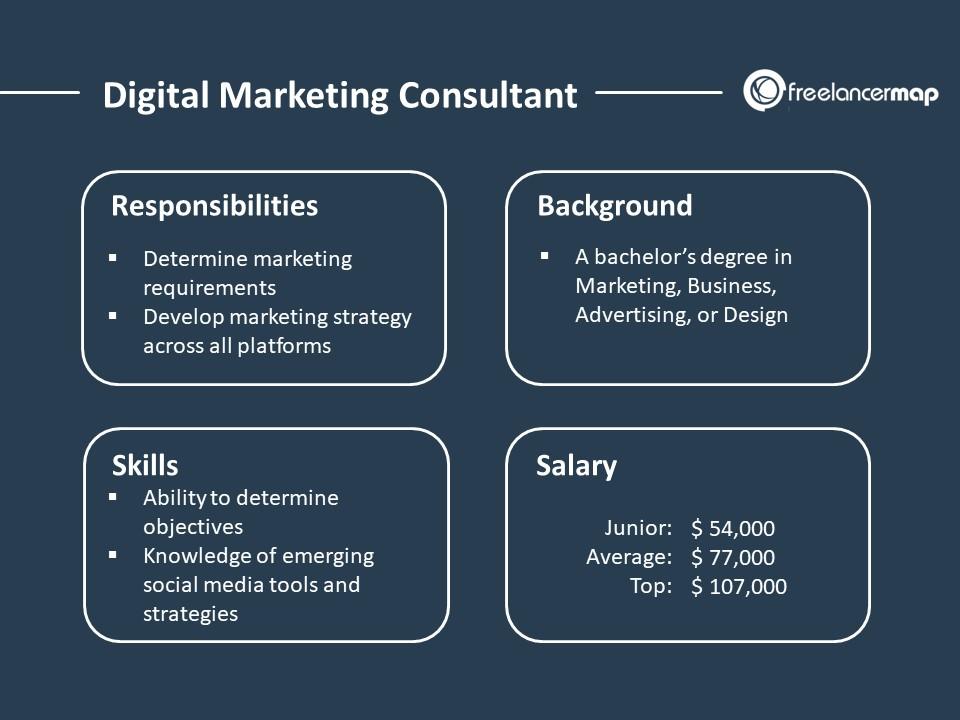
Freelance Marketing Consultant
Setting your rates as a involves a delicate balance between perceived value, market demand, and your personal income goals. To navigate this labyrinth, consider several factors that influence pricing:
- Your Experience: More seasoned consultants can command higher fees due to their proven track record and industry insights.
- Client Budget: Understand the financial capacity of your clients; small businesses may require different pricing strategies than larger corporations.
- Project Scope: Tailor your rates based on the complexity and duration of each project, ensuring they reflect the workload involved.
Additionally, it is vital to stay informed about market rates within your niche to maintain competitiveness. A strategic approach to setting your prices can include:
| Strategy | Description |
|---|---|
| Hourly Rate | Charge clients based on the number of hours worked; ideal for ongoing projects. |
| Project-Based Pricing | Set a fixed fee for specific projects, providing transparency and clarity for clients. |
| Value-Based Pricing | Align your fee with the value delivered to the client, potentially yielding higher income for impactful results. |
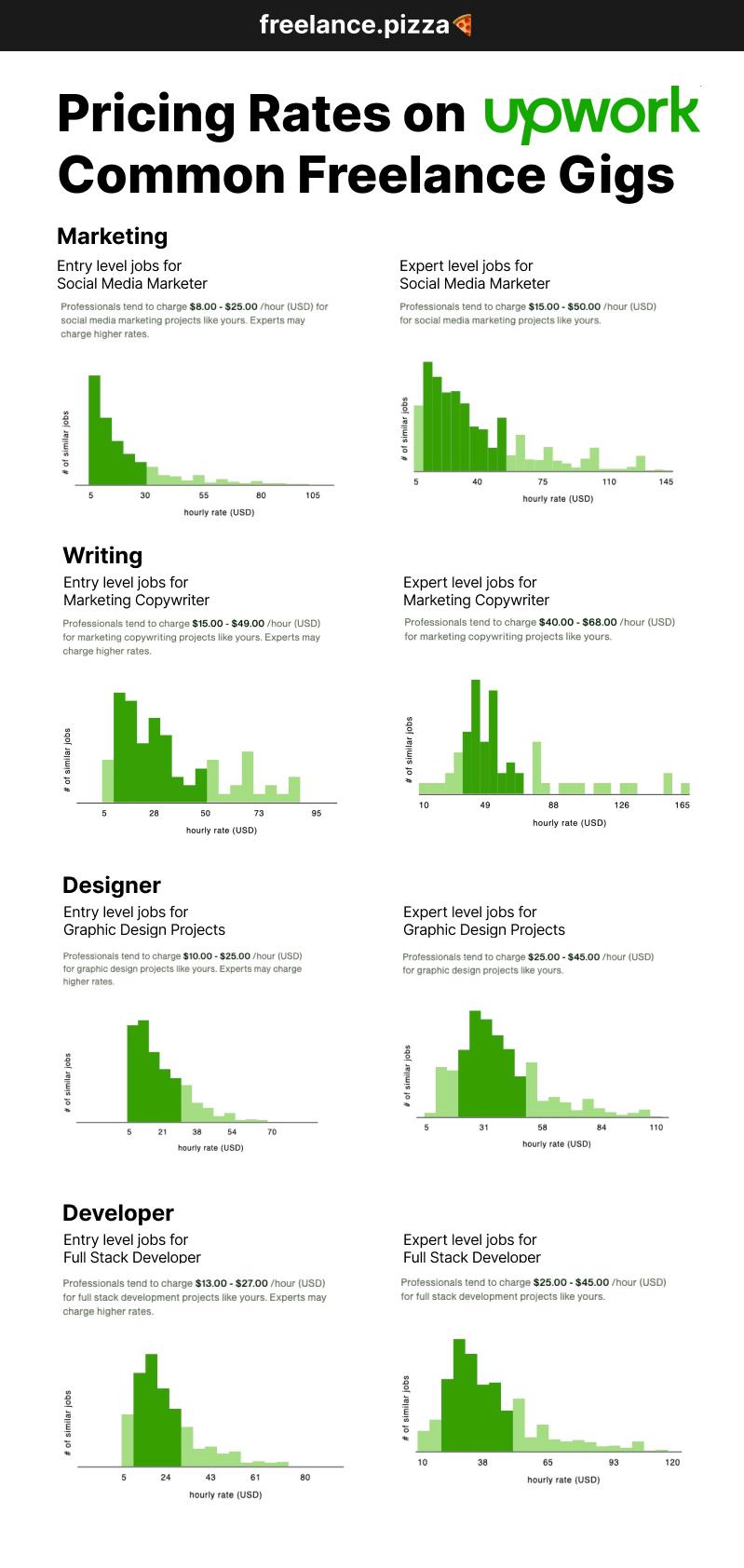
Freelancing for Beginners
Setting your freelance rates can feel like a daunting task, especially if you’re just stepping into the world of freelancing. The first step is to research the market to understand the going rates for your specific skills and services. Start by identifying your niche and look at what others are charging. Websites like blank”>Upwork and blank”>Fiverr can provide valuable insights. Additionally, consider your experience level and the value you bring to your clients. Remember, charging too low can undermine your expertise, while pricing too high may deter potential clients, so striking the right balance is crucial. Here are some factors to consider when determining your rates:
- Your Skill Level: Assess your experience and the quality of your work.
- Market Demand: Consider how in-demand your services are within your market.
- Client Budget: Are your potential clients able to afford your services?
- Project Complexity: Different projects may require different skills and resources.
Once you have a solid understanding of how to position yourself, think about the different pricing models available. As a freelancer, you can choose between hourly rates, per-project fees, or retainer agreements, each with its own pros and cons. The key is to align your pricing strategy with the type of work you’re offering and your client’s needs. Below is a simple comparison of these common pricing strategies:
| Pricing Model | Pros | Cons |
|---|---|---|
| Hourly Rate | Easy to calculate and understand | Can lead to uncertainty in total costs for clients |
| Per-Project Fee | Clear overall cost, attractive for clients | Requires accurate project scope understanding |
| Retainer Agreement | Stable income and long-term client relationships | Can be hard to acquire if initial trust isn’t established |

Freelance Project Management
Successful relies on a clear understanding of your value proposition and the market landscape. To set your rates effectively, consider leveraging factors such as your expertise, project complexity, and client budget. Begin by conducting thorough research on industry standards and average rates for similar services. This ensures your pricing is competitive while also reflecting the skills and knowledge you bring to the table. A well-crafted pricing strategy might include:
- Hourly Rates: Charging based on the time spent on a project.
- Flat Fees: A pre-determined amount for the entire project.
- Value-Based Pricing: Aligning fees with the value you provide to the client.
Once you’ve established a base rate, consider adjusting it based on the specifics of each project. Important elements like client collaboration levels, deadlines, and additional services can influence your final pricing. For a more comprehensive approach, you might want to categorize your rates using a simple table format:
| Service Type | Base Rate | Complexity Level |
|---|---|---|
| Project Consultation | $75/hour | Low |
| Full Project Management | $100/hour | Medium |
| Specialized Services | $150/hour | High |

Remote Freelance Jobs
In the ever-evolving landscape of remote work, freelancing has emerged as a viable pathway for professionals across various fields. This flexibility attracts many to explore freelance opportunities, especially those seeking to escape the traditional 9-to-5 grind. Freelance jobs span a multitude of disciplines, from graphic design and content writing to software development and digital marketing. This abundance enables you to choose projects that resonate with your skills and interests, ultimately fostering a more fulfilling work-life balance.
As you navigate the myriad of available, understanding how to pitch your rates effectively becomes crucial. It’s essential to evaluate your expertise, the complexity of the project, and the market demand. Consider creating a pricing strategy that reflects the value you offer while remaining competitive. Here are some strategies to consider:
- Hourly Rate: Set a price based on your time and effort.
- Project-Based Pricing: Charge a flat fee for completing a specific task.
- Value-Based Pricing: Align your rates with the client’s anticipated outcomes and benefits.
| Strategy | Pros | Cons |
|---|---|---|
| Hourly Rate | Easy to calculate | Potential for undervaluing skills |
| Project-Based Pricing | Clear expectations | Risk of scope creep |
| Value-Based Pricing | Maximizes earning potential | Harder to justify rates |

Freelance Photography
When venturing into , understanding how to set your rates can be a game changer. Pricing your services effectively not only reflects your skill level but also communicates your value to potential clients. To establish a competitive yet fair pricing structure, consider the following factors:
- Your Experience: More seasoned photographers can command higher rates based on their portfolio and industry exposure.
- Market Demand: Research competing photographers in your area to gauge the going rates for similar services.
- Project Type: Different types of photography (e.g., weddings, portraits, commercial) may justify different pricing tiers.
- Expenses: Account for costs like equipment, software, marketing, and travel when calculating your rates.
Moreover, transparency can foster trust and attract repeat clients. Consider creating a simple pricing table to showcase your offerings clearly. Be straightforward about what your fees include, and always leave room for negotiation based on client needs:
| Service | Price | Duration |
|---|---|---|
| Portrait Session | $150 | 1 hour |
| Wedding Package | $1,800 | Full day |
| Commercial Shoot | $500 | 3 hours |

Freelance Video Editing
is an art form that requires not only technical skills but also an understanding of how to price your services appropriately. When setting your rates, consider the following key factors to ensure a balance between earning a fair wage and remaining competitive:
- Experience Level: Your portfolio speaks volumes—be sure to adjust your rates according to your years of experience and the complexity of projects you can handle.
- Project Type: Different projects require varying levels of effort and skill. Weddings, corporate videos, and creative shorts all have different pricing standards.
- Client Budget: Understand the financial bandwidth of your clients, as some may prefer a more flexible pricing structure.
Additionally, staying informed about industry standards can significantly impact your pricing strategy. Here’s a simple breakdown of typical rates:
| Experience Level | Hourly Rate | Estimated Project Rate |
|---|---|---|
| Beginner | $25 – $45 | $150 – $300 |
| Intermediate | $45 – $75 | $300 – $600 |
| Expert | $75 – $150+ | $600 – $1200+ |
By evaluating your skills, the types of projects you’re passionate about, and the market demand, you can derive a pricing strategy that not only reflects your worth but also attracts the right clients.

Freelance Social Media Manager
As a , understanding how to set your rates requires a mix of strategy and insight into the market trends. Clients are often looking for someone who can not only manage their profiles but enhance their brand’s online presence effectively. When determining your pricing, consider the following factors:
- Experience Level: More experienced managers can justify higher rates due to their proven track record.
- Service Scope: The range of services you offer (strategy, content creation, analytics, etc.) can influence pricing.
- Client Type: Larger companies may have bigger budgets compared to startups or individual freelancers.
To simplify your pricing strategy, you might consider implementing tiered packages. This can entice various clients and provide them with options that fit their needs and budget constraints. Below is a basic example of tiered service offerings:
| Package | Services | Price |
|---|---|---|
| Basic | 2 Social Media Platforms, 8 Posts/Month, Basic Analytics | $300/month |
| Standard | 3 Platforms, 15 Posts/Month, Detailed Analytics, Monthly Strategy Session | $600/month |
| Premium | 5 Platforms, 30 Posts/Month, Advanced Analytics, Weekly Strategy Sessions | $1,200/month |
By categorizing your offerings this way, you not only communicate value but also allow clients to choose a package that aligns with their goals and budget. It’s crucial to regularly analyze your rates and adjust them based on market demand and feedback to remain competitive while ensuring your efforts are adequately compensated.

Freelance SEO Expert
The landscape of freelance SEO consultancy is vast and diverse, with rates influenced by experience, niche expertise, and service offerings. To establish a competitive pricing strategy, consider the following factors that can dictate your rate structure:
- Experience Level: Assess how many years you have been in the field and the complexity of the projects you have handled.
- Specialization: Focus on specific areas such as technical SEO, local SEO, or content optimization can justify higher rates.
- Client Demographics: Tailor your pricing based on the type of clients you serve; larger businesses may have bigger budgets compared to startups.
- Results Driven: If you can demonstrate successful past campaigns and KPIs, consider charging a premium for your expertise.
Understanding your value and effectively communicating it can greatly influence your income as a freelancer. Creating tiered packages can also provide clarity to potential clients. Below is a simple model that illustrates different service levels:
| Package | Services Included | Starting Price |
|---|---|---|
| Basic | Keyword Research, Basic On-Page Optimization | $300 |
| Standard | All Basic Services + Content Strategy | $600 |
| Premium | All Standard Services + Monthly Reporting & Competitor Analysis | $1000 |

Freelance Copywriting
Setting your rates can be one of the most challenging aspects of running your business. To arrive at a price that reflects your skills and experience while remaining competitive, consider these factors:
- Experience Level: Newcomers may start at a lower rate to build their portfolio, while seasoned writers can command higher prices.
- Market Demand: Research the going rates in your niche. A specialized area may allow for premium pricing.
- Project Complexity: More intricate projects requiring research or a unique voice might justify a higher fee.
- Your Value Proposition: Reflect on the unique skills you bring or the outcomes you facilitate for clients.
Additionally, consider different pricing models to maximize your earnings. Here are popular options:
| Pricing Model | Description | Best for |
|---|---|---|
| Hourly Rate | Charge based on the time spent on a project. | Short-term projects |
| Per Word | Set a fee for each word written. | Content-heavy assignments |
| Flat Fee | A fixed price for the entire project. | Defined scope projects |
| Retainer | Ongoing work for a set monthly fee. | Long-term collaborations |

Freelance Business Tips
Determining the right price for your freelance services is more than just setting a number; it’s about understanding your worth and the value you bring to your clients. To establish a charging structure that aligns with your expertise and the quality of your work, consider the following strategies:
- Market Research: Investigate what others in your niche are charging to gain perspective.
- Value-Based Pricing: Assess the impact your work has on the client’s bottom line and price accordingly.
- Hourly vs. Project Rates: Decide whether to charge by the hour or per project based on the scope of work.
- Skill Level and Experience: Factor in your experience, skills, and the demand for your services.
- Flexibility and Negotiation: Be prepared to negotiate but know your minimum acceptable rate.
Additionally, crafting a pricing table can help communicate your services and their respective costs effectively. Incorporating a simple yet clear layout allows clients to see their options at a glance. Here’s a quick example:
| Service | Hourly Rate | Project Rate |
|---|---|---|
| Content Creation | $50 | $500 |
| Graphic Design | $60 | $600 |
| Web Development | $75 | $750 |
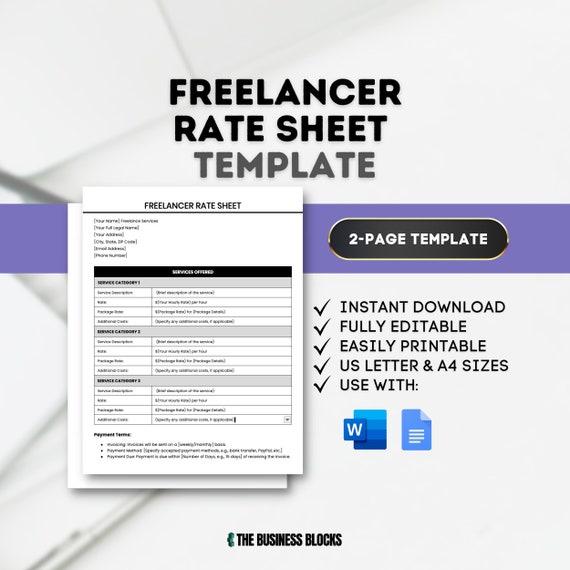
Freelance Rates and Pricing
Establishing your freelance rates is not just a matter of pulling a number out of thin air; it requires careful consideration of your skills, experience, and the market demand. Start by assessing your value proposition—what unique skills do you bring to the table that differentiate you from the competition? Understanding your client’s budget and their willingness to pay can also inform your pricing strategy. Here are some factors to consider:
- Experience Level: More experienced freelancers can typically charge higher rates.
- Market Research: Investigate what others in your niche charge.
- Project Type: Different types of projects may demand different rates.
- Client Industry: Rates can vary based on the client’s sector.
When it comes to setting your rates, think about employing different pricing strategies to give you flexibility. One common approach is to offer tiered packages, which provide clients with options based on their needs. Here’s a simple way to structure these packages:
| Package | Description | Price |
|---|---|---|
| Basic | Entry-level services for small projects | $300 |
| Standard | Comprehensive services for medium-sized projects | $600 |
| Premium | Full-service offerings for extensive projects | $1200 |
Additionally, consider adopting hourly rates versus project-based pricing, depending on what suits your workflow best. Remember, the key to successful pricing is not just about what you charge, but how you communicate the value behind those numbers to your clients.

Building a Freelance Portfolio
Creating a compelling freelance portfolio is essential for showcasing your skills and attracting potential clients. Your portfolio should embody your personal brand and reflect the diversity of your work. Start by curating your best pieces, focusing on those that highlight your range and expertise. Consider including:
- Case Studies: Detailing the problem, solution, and results.
- Visual Samples: Images or screenshots of completed projects.
- Client Testimonials: Positive feedback from previous clients.
Furthermore, an organized layout can enhance user experience. Create categories for different types of work or industries you’ve worked in, making it easy for viewers to navigate your portfolio. A simple HTML table can also help summarize your work experience versus typical market rates:
| Service Offered | Typical Rate | Your Rate |
|---|---|---|
| Graphic Design | $50/hr | $45/hr |
| Web Development | $75/hr | $70/hr |
| Content Writing | $30/hr | $25/hr |
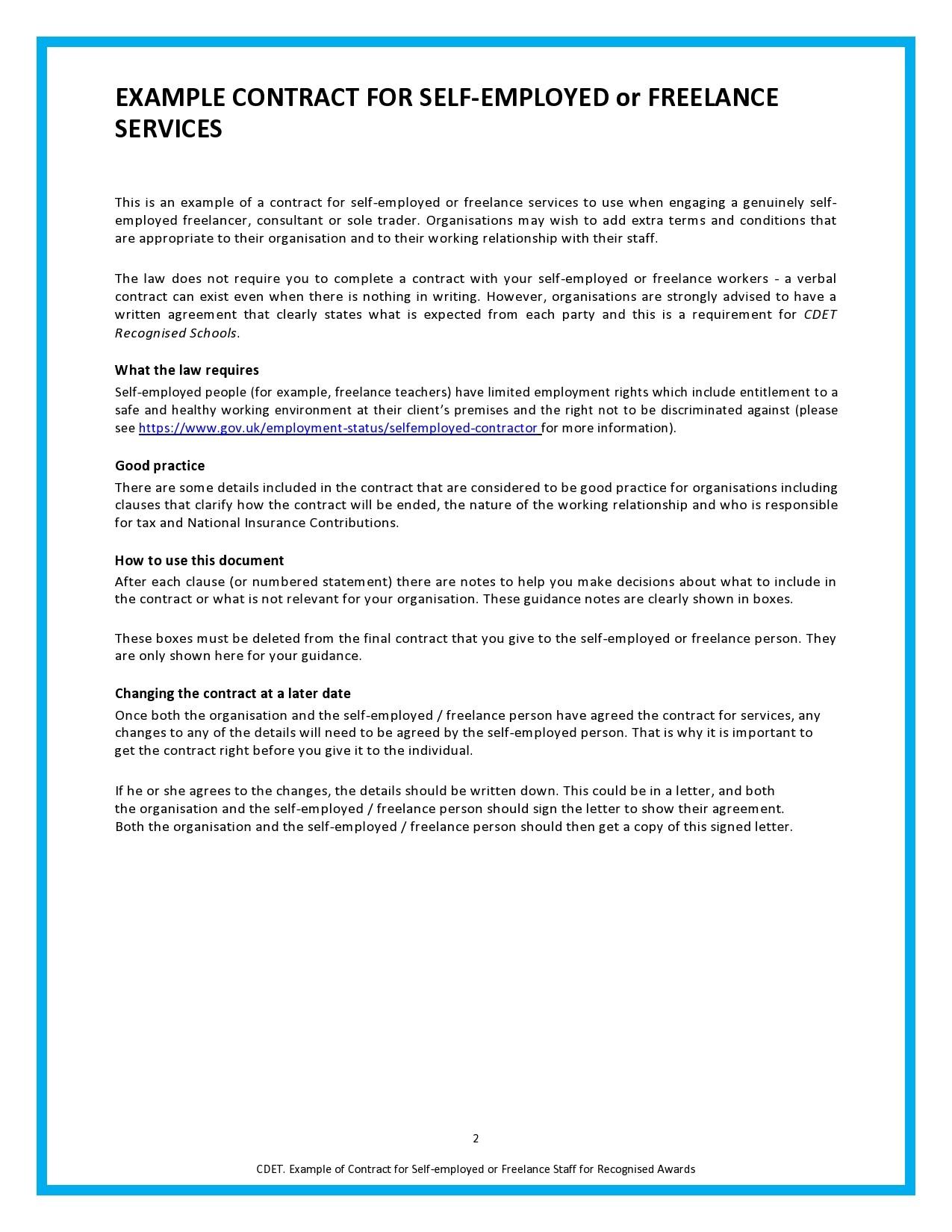
Freelance Contract Templates
When it comes to managing your freelance business, having a solid contract template is essential for defining terms and clarifying expectations. A well-crafted contract protects both you and your client, establishing boundaries and providing a clear framework for the project. Here are some key components to consider including in your contract templates:
- Scope of Work: Detail the services you will provide.
- Payment Terms: Specify rates, payment schedules, and modes of payment.
- Deadlines: Include project timelines to ensure accountability.
- Revisions: Outline how many revisions are included and how additional revisions will be handled.
- Termination Clause: Define the process for contract termination by either party.
To help you get started, here’s a simple comparison table of various available:
| Template Name | Best For | Price |
|---|---|---|
| Basic Freelance Agreement | New Freelancers | $25 |
| Creative Services Contract | Designers and Writers | $50 |
| Independent Contractor Agreement | Consultants and Contractors | $45 |
| Comprehensive Freelance Contract | Experienced Freelancers | $75 |
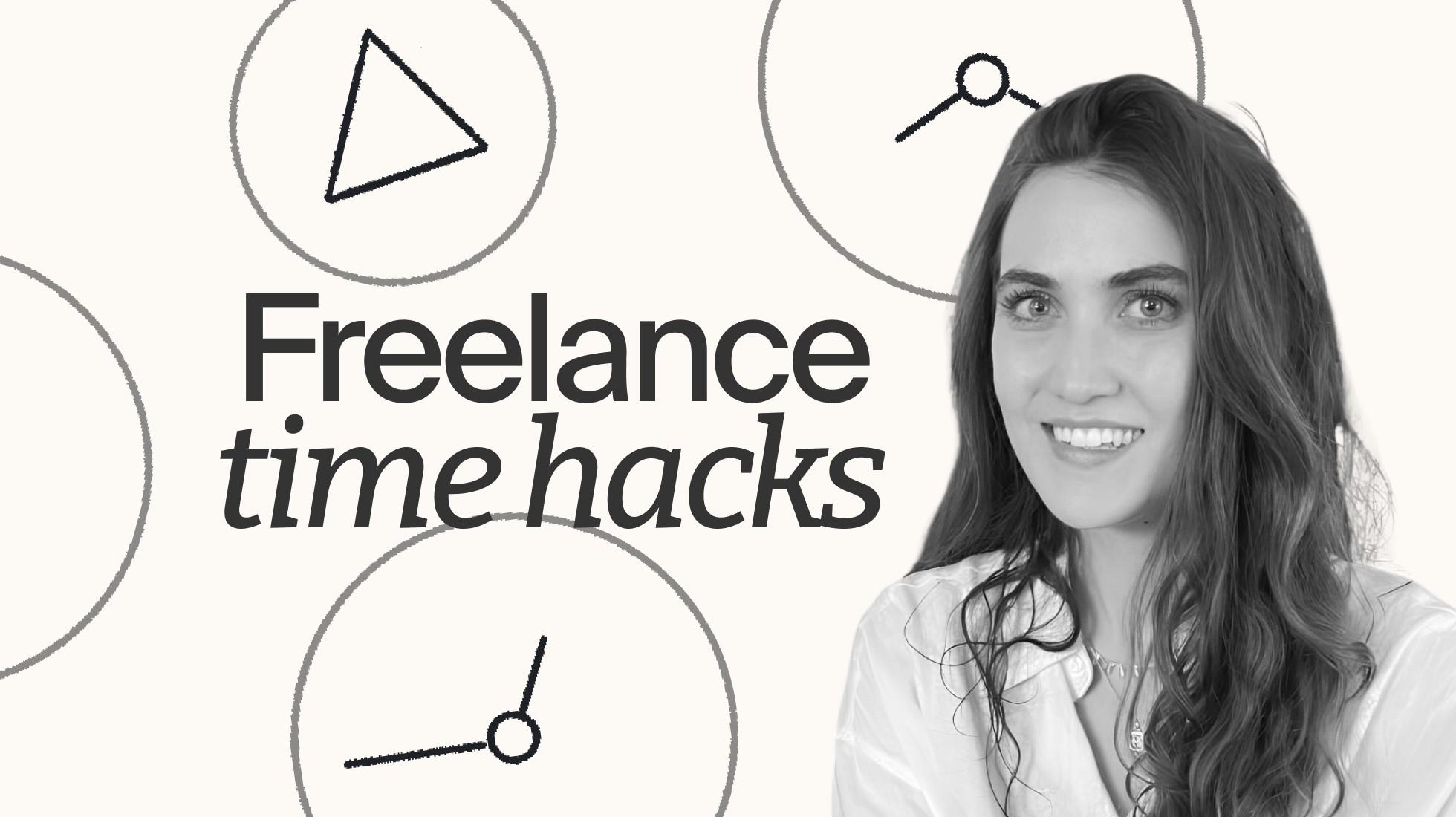
Freelance Time Management
Effective time management is crucial for freelancers aiming to maximize their earnings while maintaining work-life balance. One key strategy is the implementation of a structured schedule that allocates specific time blocks for different tasks. This could involve prioritizing client work, setting aside time for personal projects, and allocating breaks to prevent burnout. Consider the following techniques to enhance your time management:
- Time blocking: Designate specific hours for focused work, meetings, and breaks.
- Task prioritization: Use methods like the Eisenhower Matrix to identify urgent versus important tasks.
- Pomodoro Technique: Work in short, concentrated bursts followed by brief breaks to maintain energy levels.
Tracking billable hours is another essential component of effective time management, as it ensures you’re capturing all your work appropriately for invoicing. Utilize tools and apps that help monitor your time, providing insights into where your hours are spent. Here’s a simple table showcasing some popular time-tracking tools that cater to freelancers:
| Tool | Features | Cost |
|---|---|---|
| Toggl | Simple time tracking, reporting | Free or $10/user/month |
| Harvest | Time tracking, invoicing, project management | $12/user/month |
| Clockify | Free time tracking, reporting, team collaboration | Free or $9.99/user/month |

Freelance Networking
Connecting with other freelancers can significantly influence your pricing strategies. Building a supportive network allows you to exchange insights, share experiences, and learn about market trends that directly affect your rates. Here are some effective ways to expand your freelance network:
- Join Online Forums: Participate in specialized groups on platforms like Facebook, Reddit, or industry-specific forums.
- Attend Workshops and Webinars: Engage in virtual or in-person events to gain knowledge and connect with peers.
- Collaborate on Projects: Look for opportunities to team up, which can strengthen relationships and widen your reach.
- Utilize Social Media: Create and share content on LinkedIn or Instagram to showcase your skills and attract meaningful connections.
Networking isn’t just about meeting new people; it’s also about fostering relationships that can lead to referrals or partnerships. Keep in mind that pricing is often a topic of discussion among freelancers. Knowing how your peers price their services can help you position your own rates more effectively. Consider the following factors that may come into play in your discussions:
| Factor | Impact on Pricing |
|---|---|
| Experience Level | More experience typically justifies higher rates. |
| Industry Demand | High-demand services can command premium pricing. |
| Client Budget | Understanding client budgets can shape negotiation strategies. |
| Service Specialization | Niche skills often allow for higher pricing flexibility. |

Freelancing in Tech
Setting the right price for your freelance services in the tech industry can be a daunting task. To ensure you’re not undervaluing your work while remaining competitive, start by researching the market rates within your niche. Check resources like job boards, industry reports, and fellow freelancers’ profiles. Consider creating a list of factors that influence your pricing structure, such as:
- Experience Level: More experience usually warrants higher rates.
- Project Complexity: Complex projects often require more time and specialized skills.
- Client Budget: Tailor your proposals based on the financial capabilities of your target clients.
- Location: Geographic factors can affect your pricing, especially if you work with clients in high-demand areas.
Once you’ve evaluated these factors, it’s helpful to create a transparent pricing table that offers clarity to potential clients. This table can also enhance your professionalism and avoid potential misunderstandings down the line. Consider including various options, such as hourly rates, project-based fees, or retainer services. Here’s a simple example:
| Service Type | Hourly Rate | Project Rate |
|---|---|---|
| Website Development | $50 | $2000 |
| App Development | $70 | $3000 |
| Consultation | $30 | $500 |

Freelance Taxes and Accounting
Understanding your tax obligations and effectively managing your accounting is crucial for any freelancer. Keeping track of income and expenses can help you determine not only your tax liability but also your overall profitability. Here are a few essential considerations:
- Keep Detailed Records: Maintain organized records of all your invoices and receipts. This will make tax preparation much easier.
- Separate Business and Personal Finances: Opening a dedicated business bank account can help you avoid confusion at tax time.
- Estimate Quarterly Taxes: Freelancers often need to pay estimated taxes on a quarterly basis to avoid penalties.
- Consider Deductions: Familiarize yourself with deductible expenses, such as home office costs, software subscriptions, and travel expenses.
To simplify your accounting process, using dedicated software can save you time and reduce errors. Many programs are designed specifically for freelancers, offering features for invoicing, expense tracking, and tax calculations. Below is a comparison of some popular tools:
| Software | Key Features | Price (Monthly) |
|---|---|---|
| FreshBooks | Invoicing, expense tracking, time tracking | $15 |
| QuickBooks Self-Employed | Tax deduction finder, mileage tracking, invoicing | $25 |
| Wave | Free invoicing, accounting, and receipt scanning | Free |

Freelance Client Retention
Building strong, lasting relationships with clients is crucial in the freelance world, where competition can be fierce and project lifecycles are often short. One effective strategy for enhancing client retention involves understanding the client’s needs and exceeding their expectations. This means not just delivering quality work but also being proactive in communication and responsiveness. Consider implementing these practices:
- Regular Check-ins: Schedule periodic updates to discuss project progress and gather feedback.
- Personal Touch: Remember personal details, like their business objectives or milestones, to create a stronger bond.
- Follow-up on Deliverables: After completing a project, check in to ensure satisfaction and address any lingering questions.
Another effective avenue to foster loyalty is to offer flexible options tailored to long-term clients. Creating tiered packages or discounted rates for repeat business can incentivize clients to return. A simple structure can be outlined as follows:
| Client Type | Pricing Strategy |
|---|---|
| New Client | Standard Rate |
| Returning Client | 10% Discount |
| Long-term Client | 15% Discount with Package Deals |
By adjusting your pricing approach according to the client’s relationship with you, you not only boost the chances of continued collaboration but also enhance their perception of the value you bring to their projects.

Freelancing Full-Time vs Part-Time
When considering a career in freelancing, one of the first choices to make is whether to dive in full-time or to dip your toes part-time. Each option comes with its own set of advantages and challenges. Freelancing full-time allows for greater flexibility in scheduling and workload, providing the chance to cultivate a more robust portfolio and potentially secure higher-paying projects. However, it can also come with the pressing reality of inconsistent income and the need for self-discipline to continuously seek out new clients. On the other hand, part-time freelancing presents a safety net, allowing individuals to maintain a steady income from a regular job while exploring their passions and building a network in their chosen freelance field.
Ultimately, the choice between full-time and part-time freelancing often depends on personal circumstances, financial stability, and career goals. Many freelancers find success by starting off part-time to assess their marketability and refine their skills before making the leap to full-time. Here are some considerations that may guide this decision:
- Stability: A part-time approach offers a more reliable financial foundation.
- Time Management: Full-time freelancing requires efficient scheduling to maintain a work-life balance.
- Client Relationships: More time in the freelance arena can lead to deeper connections with clients, increasing trust and repeat business.
- Skill Development: Part-time freelancers can hone their abilities while still gaining professional experience from their main job.
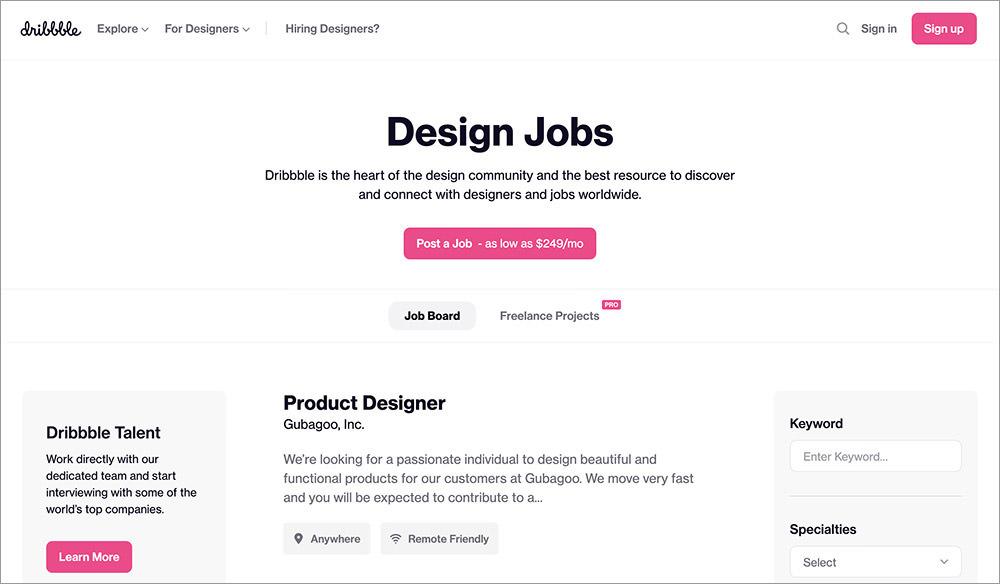
Freelance Job Boards
As a freelancer navigating the complexities of pricing your services, it’s essential to understand the landscape of where potential clients seek talent. These platforms can not only help you find work but also offer insight into prevailing rates within your industry. Here are some popular job boards that can help you gauge market pricing:
- Upwork – A leading platform where freelancers can showcase their skills while clients bid for services.
- Fiverr – This platform allows freelancers to offer services at various price points, helping to set competitive rates.
- Freelancer.com – A versatile site that provides a wide range of projects, giving freelancers the opportunity to adjust their pricing based on demand.
- Guru – Known for its robust functionality, it’s an excellent resource for finding work and understanding pricing norms in different sectors.
Familiarizing yourself with these platforms not only aids in job acquisition but also provides a sense of the competitive landscape. Most job boards incorporate features that allow users to view typical project budgets and client expectations, which can be instrumental in developing smart pricing strategies. Below is a simple comparison of platforms and their fee structures:
| Job Board | Commission Fee | Payment Terms |
|---|---|---|
| Upwork | 20% (first $500) | Direct to bank, PayPal, or debit card |
| Fiverr | 20% per sale | Cumulative withdrawal available |
| Freelancer.com | 10% or $5, whichever is greater | Withdrawal via multiple options |
| Guru | 5% to 9% based on membership | Direct deposit, PayPal, or wire transfer |
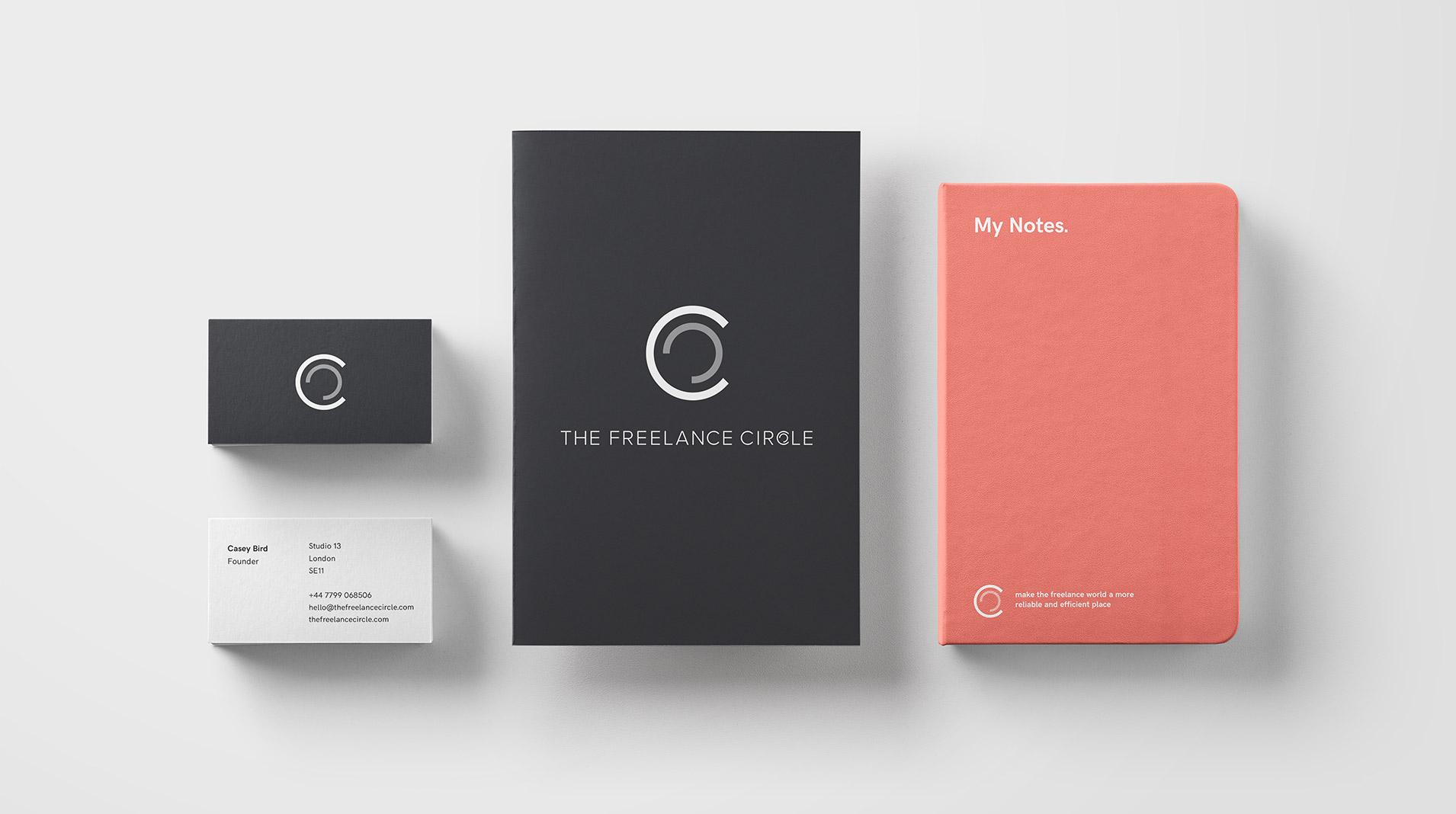
Freelance Branding Strategies
In today’s competitive landscape, establishing a strong personal brand is crucial for freelancers seeking to attract clients and justify their rates. To build a cohesive identity that resonates with your target audience, consider the following strategies:
- Define Your Niche: Identify your specific skills and target market, allowing you to position yourself as an expert in your field.
- Create a Professional Portfolio: Showcase your best work through a visually appealing online portfolio that reflects your unique style and strengths.
- Engage on Social Media: Use platforms relevant to your niche to share insights, connect with potential clients, and showcase your personality.
Moreover, consistency in branding can significantly impact your perceived value. Here are a few essential elements to maintain:
- Visual Identity: Use consistent colors, fonts, and design elements across all platforms and materials.
- Brand Voice: Develop a unique tone and style for your communications that align with your target audience.
- Client Testimonials: Leverage positive feedback and case studies to build credibility and showcase your success stories.

Freelancing in Graphic Design
Understanding how to effectively price your services as a graphic designer can significantly impact your freelance career. Establishing your rates isn’t merely about covering your costs; it’s about reflecting your skills, experience, and the value you provide to your clients. Consider the following factors when determining your pricing strategy:
- Your Experience Level: New freelancers might start with lower rates to build a portfolio, while seasoned designers can charge premium prices based on their expertise.
- Market Demand: Research prevailing market rates in your niche within graphic design; this will help you align your pricing competitively.
- Project Complexity: Adjust your rates based on the intricacy of the project; more complex designs typically warrant higher fees.
- Client Budget: Tailoring your services to accommodate the budget of your clients can lead to more projects without undervaluing your work.
Another effective approach is to categorize your services into tiered pricing structures, ensuring clients feel they have options. Below is a simplified table that illustrates potential service tiers and corresponding pricing:
| Service Tier | Description | Price Range |
|---|---|---|
| Basic | Simple logo design or business card | $100 – $300 |
| Standard | Brand identity with multiple deliverables | $300 – $600 |
| Premium | Comprehensive branding package including web assets | $600+ |

Freelance Personal Development
Determining your freelance rates is more than just a numbers game; it’s a reflection of your skills and a vital part of your personal development as a freelancer. To begin, assess your unique value proposition. Consider the following factors that can shape your pricing strategy:
- Experience Level: How many years have you been in the industry?
- Specialization: Are you offering niche services that are in high demand?
- Market Rates: What are others in your field charging?
- Client Base: Do you have repeat clients or a diverse portfolio?
Once you understand your value, organize your pricing into clear structures. Many freelancers find success with tiered pricing models that cater to different client needs. Below is a simple overview:
| Service Level | Price Range | Included Features |
|---|---|---|
| Basic Package | $50 – $100 | Standard service, 1 revision |
| Standard Package | $100 – $200 | Additional features, 2 revisions |
| Premium Package | $200+ | Full service, unlimited revisions, priority support |

Freelance Income Diversification
For freelancers, depending solely on one source of income can create unnecessary financial strain and limit growth potential. Diversifying your freelance income not only stabilizes your earnings but also opens new avenues for creativity and professional development. Consider the following strategies to broaden your revenue streams:
- Offer Multiple Services: Expand your skill set by offering complementary services. For example, if you’re a graphic designer, think about providing branding consultation or web design.
- Create Passive Income Streams: Explore opportunities such as online courses, eBooks, or stock designs that allow you to earn money over time with initial upfront work.
- Join Affiliate Programs: Leverage your existing audience by promoting products relevant to your niche and earning a commission on sales through affiliate marketing.
It’s essential to assess your current workload and identify potential areas for diversification without overwhelming yourself. To help visualize your earning potential from different streams, consider the table below:
| Income Stream | Potential Monthly Earnings | Effort Level |
|---|---|---|
| Client Projects | $1,500 | High |
| Online Courses | $500 | Medium |
| Affiliate Marketing | $300 | Low |
| eBooks | $400 | Medium |
By assessing and adjusting your strategies based on the opportunities available, you can create a more resilient freelance business that thrives through varied income sources. Embrace the possibilities of diversification, and watch as it transforms your freelance journey into a more rewarding and secure adventure.

Freelance Career Growth
As you navigate the world of freelancing, understanding and adjusting your rates is critical for your career development. The ability to price yourself appropriately not only reflects your skill level but also significantly impacts your income. Freelancers should regularly evaluate their pricing strategies by considering factors such as:
- Market Rates: Research and compare what others in your niche are charging.
- Experience Level: Adjust your rates based on your expertise and the complexity of the work.
- Client Budget: Be aware of the financial capabilities of your clients.
- Deliverables: Ensure your pricing aligns with the outcomes expected by clients.
It’s important to remember that your pricing strategy should evolve. Keeping a close watch on industry trends and adapting your rates accordingly can lead to sustainable growth in your freelance career. A proven approach is to establish a tiered pricing model, which can include:
| Tier | Description | Price |
|---|---|---|
| Basic | Entry-level services with limited scope. | $50/hour |
| Standard | Comprehensive services with added features. | $100/hour |
| Premium | All-inclusive packages with full support. | $150/hour |

Freelance Market Trends 2024
The freelance market is undergoing significant shifts in 2024, influenced by various external factors that shape demand for freelance services. Remote work remains a cornerstone of the economy, with businesses increasingly seeking diverse talent pools beyond geographical limitations. As a result, freelancers can expect competitive pricing, but they must also navigate price sensitivity from clients who are keen on maximizing budget efficiency. Understanding local market conditions and global economic trends will be pivotal in setting appropriate rates that reflect both skill level and the quality of service provided.
Moreover, freelancers are recognizing the importance of demonstrating value and expertise, leading to a rise in premium service offerings. As specialization becomes more prominent, skills in areas like technology, digital marketing, and graphic design command higher rates. Emerging trends in the gig economy include an increased emphasis on social proof and client testimonials, which enhance a freelancer’s credibility. To effectively structure pricing strategies, freelancers should consider:
- Benchmarking against industry standards
- Offering tiered pricing based on project complexity
- Incorporating flexible payment options for clients
| Skill Type | Average Hourly Rate (2024) | Market Demand Trend |
|---|---|---|
| Web Development | $75 | High |
| Graphic Design | $50 | Moderate |
| Digital Marketing | $65 | Growing |
| Content Writing | $40 | Stable |
Future Outlook
navigating the complex landscape of freelance rates doesn’t have to be daunting. By understanding market trends, evaluating your skill set, and considering the unique value you bring to the table, you can establish a pricing strategy that not only reflects your expertise but also aligns with your clients’ expectations. Remember, pricing is not just a number—it’s an art that balances confidence and competitiveness. As you embark on your freelancing journey, take these insights to heart, adapt as necessary, and allow your rates to evolve with your growing experience. Embrace the power of strategic pricing, and watch as it transforms not only your income but also the way you and your clients perceive the value of your work. Here’s to smart pricing and a thriving freelance career!


